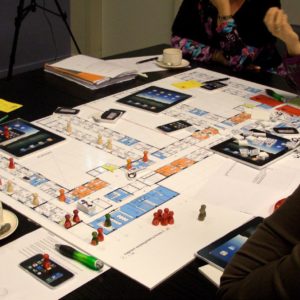For my PhD research, I had to do some experiments in design education. Design education is characterized by a learning-by-doing approach when the learner is pushed to take the lead of experimentation.
This represents a problem for design educators who also want to test the research hypothesis within teaching activities since it is not easy to control stimuli without losing the emergence of unexpected results, which is so important for design. Conducting design experiments with controlled stimuli seems to be contradictory, yet the only option available to compare different ways of designing.
I came across a different method for psychological experiments which I think it is more suitable for design education: the double stimulation method created by Lev Vygotsky. This method is not based on controlling stimuli, but actually on observing the emergence of stimuli in uncontrolled situations.
Controlled experiments are organized to isolate the effects of a single stimulus under the behavior of a person. Double stimulation experiments are organized to distinguish the reaction of a stimulus with the means to understand and interfere with the stimulus, the so-called second stimulus. For example, the diagram below compares how I would frame an experiment about learning from games with single and with double stimulation.

The focus of the double stimulation method is, therefore, on reconstructing learning, taking process more into account than the outcome. The first stimulus is a contradictory situation and the second stimulus is an ambiguous instrument that may be used to overcome contradictions. The game introduces a typical contradiction in society for which there is no definite solution (ex: competition X collaboration). The participants have to find out how to deal with that contradiction within the game rules, using the resources available. The contradiction is not eliminated but reproduced by the action in a different configuration.
The experiment looks at how subjects make the second stimulus their own, i.e. how they resolve the ambiguity and give a certain meaning to the instrument to act on the contradiction. The instrument objectifies meaning-making, which helps not only the experimenters but also the learner. By observing the meaning externalized, it is possible to reconstruct learning as a historical phenomenon.
Classic examples
The classic example given by Vygotsky is an experiment realized by Sakharov with 6 years old kids. The child received a pile of blocks to sort into four categories. The experiment looks at the reasoning created by students to categorize the blocks. At a certain moment, the child realizes an organizing principle behind the blocks, which is quite ambiguous. The video below shows a contemporary reissue of the experiment.
Another classic is the experiment organized by Leont’ev with young kids and adults, the forbidden color game. The experimenter asked about the color of objects in the room and objects outside of the room. Then he introduces a second stimulus, a color swatch with cards of different colors. Young kids tend to rely on this swatch to answer the question about objects that are not in the room, whereas adults do not make use of them. Watch over the eye gaze of this girl in this contemporary reissue of the experiment. She is gradually learning to use the swatch as a means to answer faster questions.
My own example
I’ll share an experiment I did with Civil Engineering bachelor students. In the program, they have a course entitled Methods and Strategies for Facility Design. I thought that it would be important for them to try different methods and reflecting on them. So we organized the experiment in that way: all the students will be provided with the same project brief about a medical imaging center facility, but they will be divided into three groups according to the methods provided.
The first group received a simplified version of TRIZ, a structured approach for creating innovative solutions. The core of the method is relating the project situation to a contradiction matrix, which can provide generic principles for idea generation.
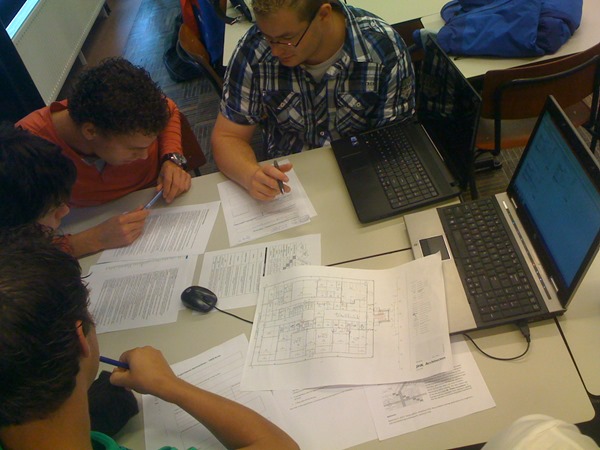
The second group received PSP, a less-structured method I co-developed at Faber-Ludens Institute. The method consists of investigating one problem in depth, considering even the problems raised by the solutions.
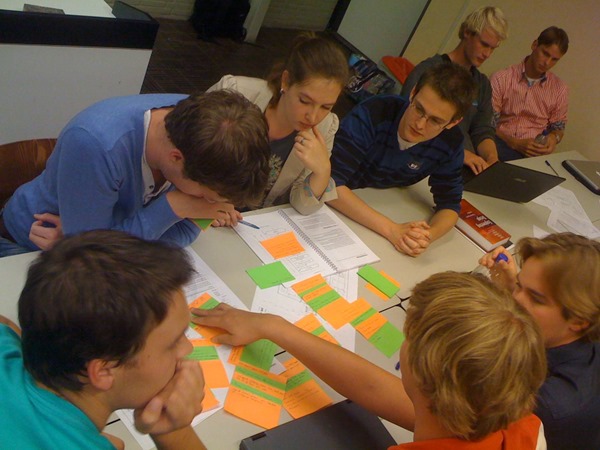
The third group did not receive any method, but instead materials to create their own method: computer, paper, pencils, post-its, wool, wooden blocks, and game tokens. The use of these materials was very diverse, but the method resembled the traditional engineering approach of defining a problem, breaking down into sub-problems, and generating solutions for each separate problem.
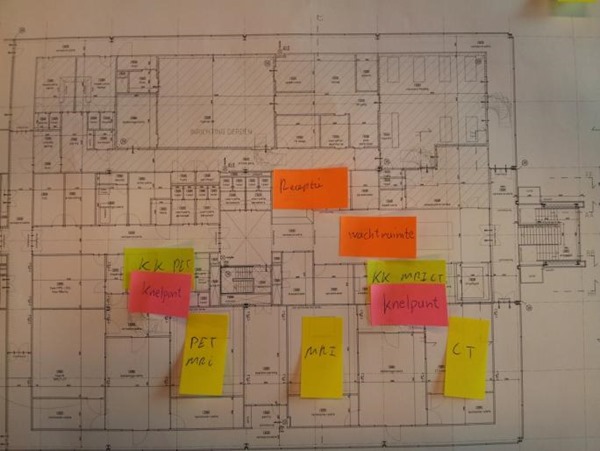
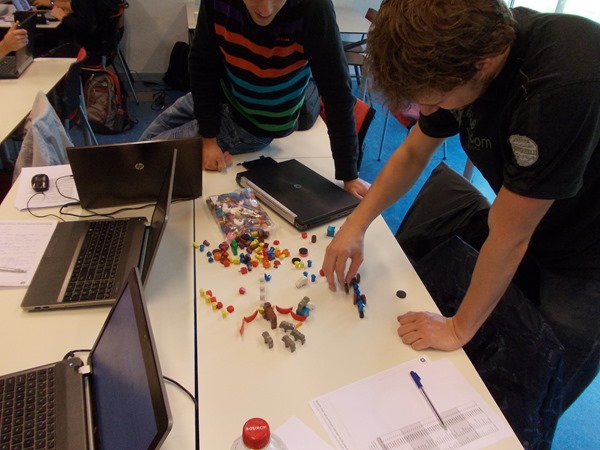

The data analysis for these experiments is not yet complete. Instead of comparing the impact of these different methods in the design process, I’ll compare the impact of the students on these methods. I’m more interested in generalizing something about their learning process rather than about the characteristics of these methods. Therefore, I’ll analyze in a qualitative fashion each student group, trying to trace the process as it unfolded. I depart from the assumption that the design process is not determined by the method.
A lesson I learned while organizing these experiments is that the instrument for a double stimulation experiment should be, first of all, very ambiguous. It should not tell exactly how to react to the contradiction. The instrument may indeed have some structures to assist students in organizing their own process of learning like a scaffold organizes the process of construction but does not determine its content.
The instrument could have a series of steps to be considered like a method, or some categories that must be used alternatively. In any case, it would be very valuable for data analysis if the instrument can record or keep the traces of its own use. For example, if the instrument requires students to mark their own progress. This would make it easy to reconstruct how the student made that second stimulus into its own, how he/she created a course of action, how he/she designed something.
References
Van Amstel, Frederick M.C. (2021). The role of games in developing transformative agency. Brazilian Journal of Socio-Historical-Cultural Research and Activity, 3(2). https://fredvanamstel.com/journal/the-role-of-games-in-developing-transformative-agency
Amstel, F. M.C. van; Zerjav, V; Hartmann, T; Dewulf, G.P.M.R; Voort, M.C. van der. 2016. Expensive or expansive? Learning the value of boundary crossing in design projects. Engineering Project Organization Journal, 6 (1), Pages 15-29. DOI: https://doi.org/10.1080/21573727.2015.1117974
